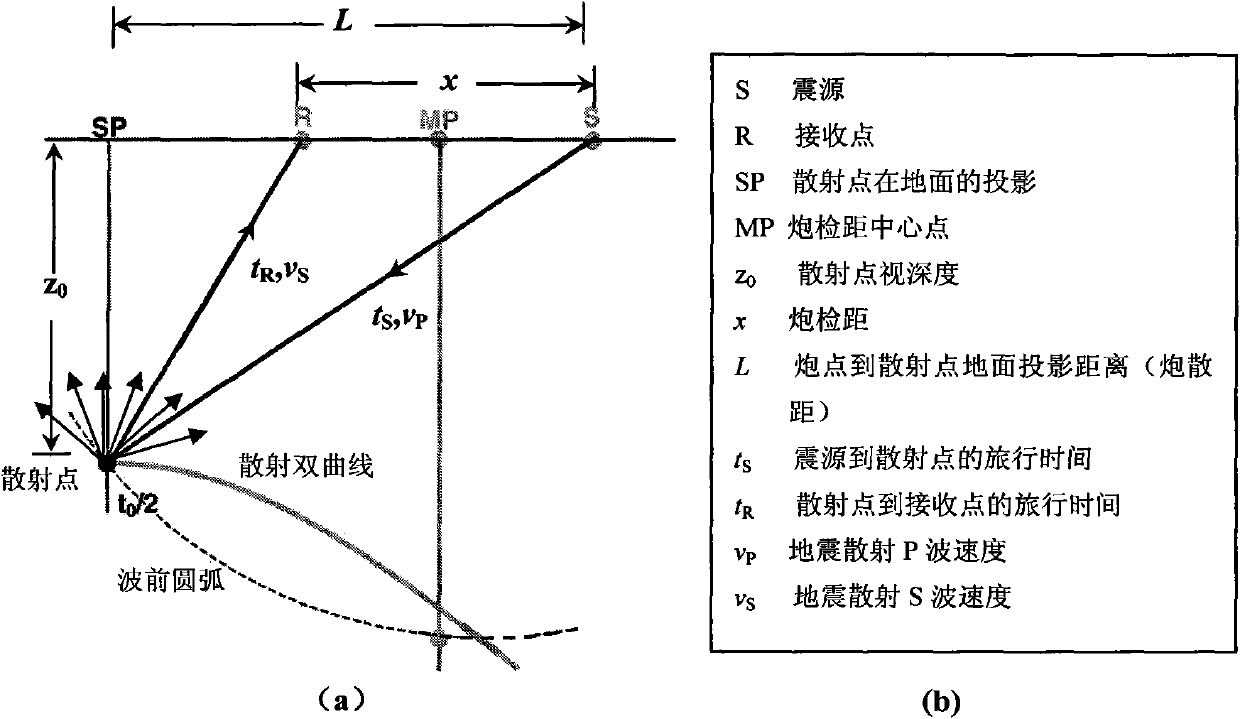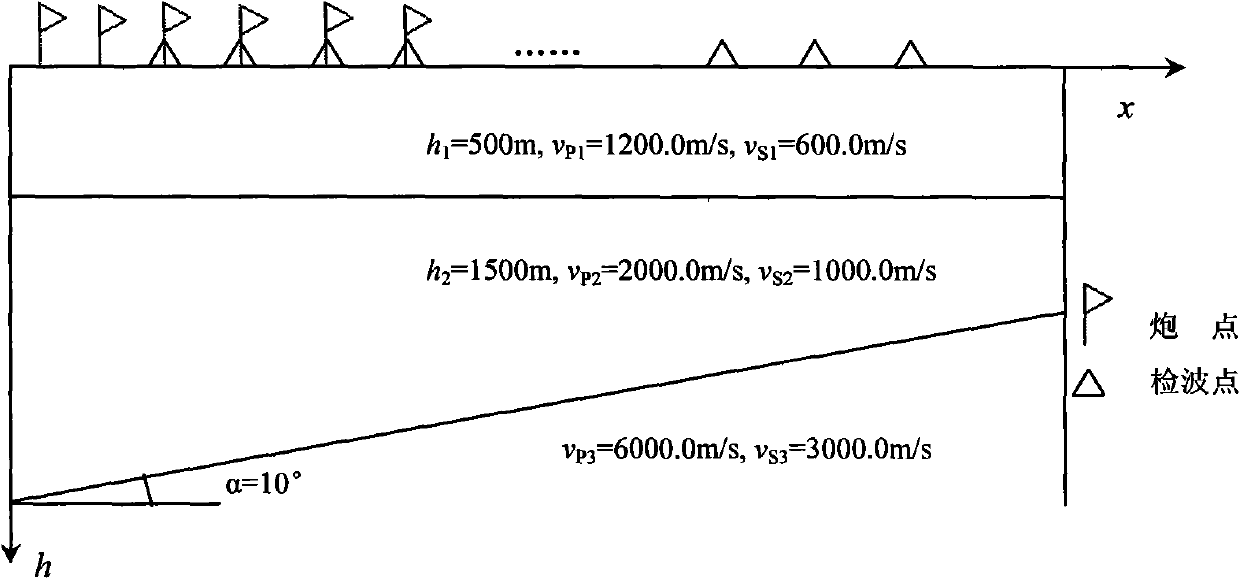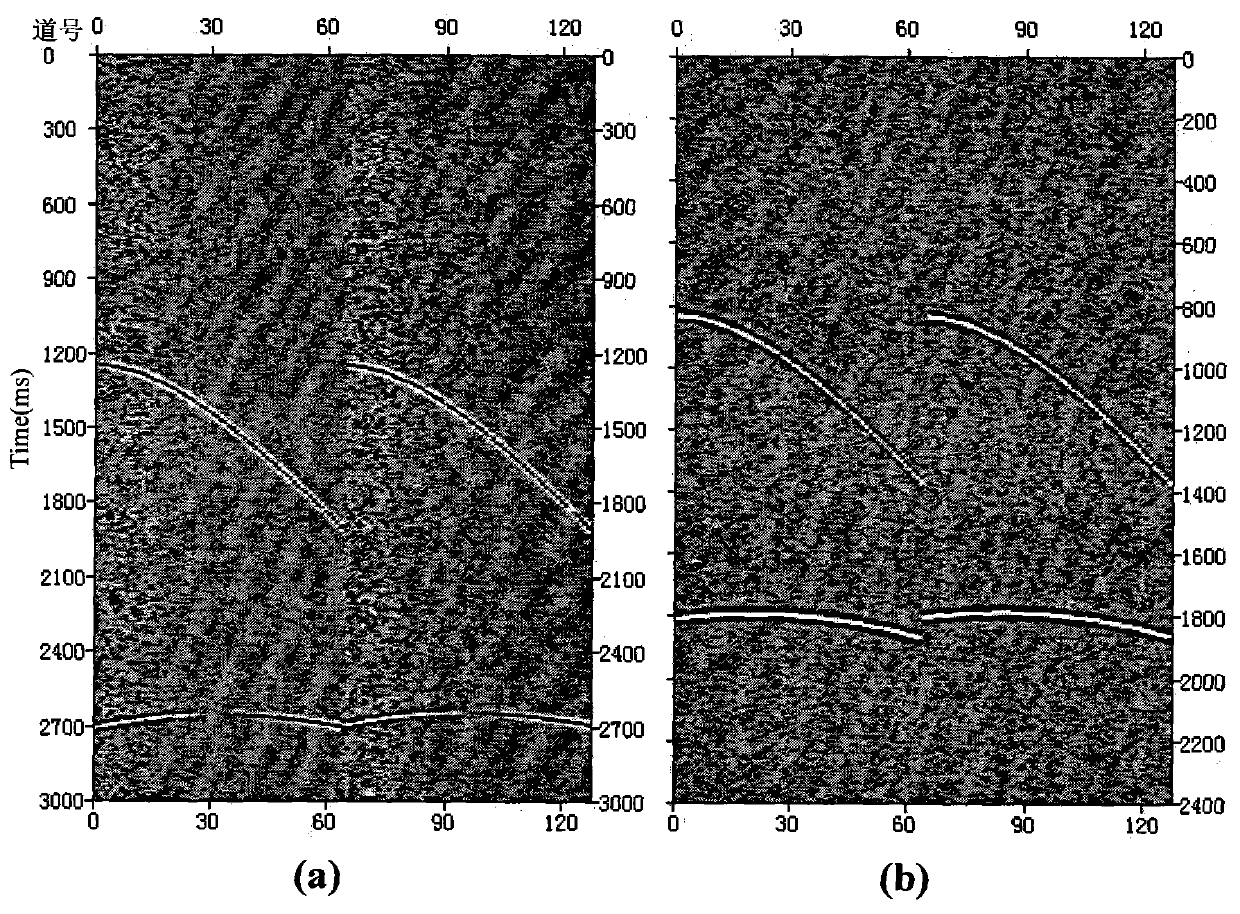Seismic scattering P-S converted wave imaging method
A technology of seismic scattering and imaging methods, applied in the direction of seismic signal processing, etc., which can solve the problems of inability to realize common conversion point gather selection and superposition imaging, difficult processing of seismic converted wave data, and inaccurate imaging results, etc., to achieve effective information The effect of fully utilizing, improving imaging accuracy, and increasing the number of stacking times
- Summary
- Abstract
- Description
- Claims
- Application Information
AI Technical Summary
Problems solved by technology
Method used
Image
Examples
Embodiment 1
[0048] Taking a two-component inclined stratigraphic model seismic data with 60 shots, 24 traces per shot, and 1500 sampling points per trace as an example to illustrate the implementation steps of this example:
[0049] Step 1: Read the seismic data containing 51 shots, 64 traces per shot, and 1024 sampling points per trace into a two-dimensional array F 1 , F 2 At the same time, the parameters of the observation system are loaded into the trace head of the original seismic data, and the positions and coordinates of the scattering points are calculated according to the observation system and acquisition parameters;
[0050] Step 2: According to the time-distance hyperbolic equation of the scattered wave, on the shot set, fix t 0i In the case of the imaging velocity (including the P-wave velocity v P and shear wave velocity v S ) to determine the scatter P-SV and P-P wave hyperbolic trajectories respectively, and then calculate the seismic scatter P-SV and P-P wave normal t...
Embodiment 2
[0070] Take a three-component actual seismic survey data containing 146 shots, 86 traces per shot, and 2000 sampling points per trace as an example to illustrate the implementation steps of this example:
[0071] Step 1: read the three-component seismic data containing 146 shots, 86 traces per shot, and 2000 sampling points per trace into the two-dimensional array F 1 , F 2 , F 3 At the same time, the parameters of the observation system are loaded into the original seismic data track head respectively, and the positions and coordinates of the scattering points are calculated according to the observation system and acquisition parameters;
[0072] Step 2: According to the time-distance hyperbolic equation of the scattered wave, on the shot set, fix t 0i In the case of the imaging velocity (including the P-wave velocity v P and shear wave velocity v S ) to determine the seismic scatter P-SV, P-SH and P-P wave hyperbolic trajectories respectively, and then calculate the seis...
PUM
 Login to View More
Login to View More Abstract
Description
Claims
Application Information
 Login to View More
Login to View More - R&D Engineer
- R&D Manager
- IP Professional
- Industry Leading Data Capabilities
- Powerful AI technology
- Patent DNA Extraction
Browse by: Latest US Patents, China's latest patents, Technical Efficacy Thesaurus, Application Domain, Technology Topic, Popular Technical Reports.
© 2024 PatSnap. All rights reserved.Legal|Privacy policy|Modern Slavery Act Transparency Statement|Sitemap|About US| Contact US: help@patsnap.com










